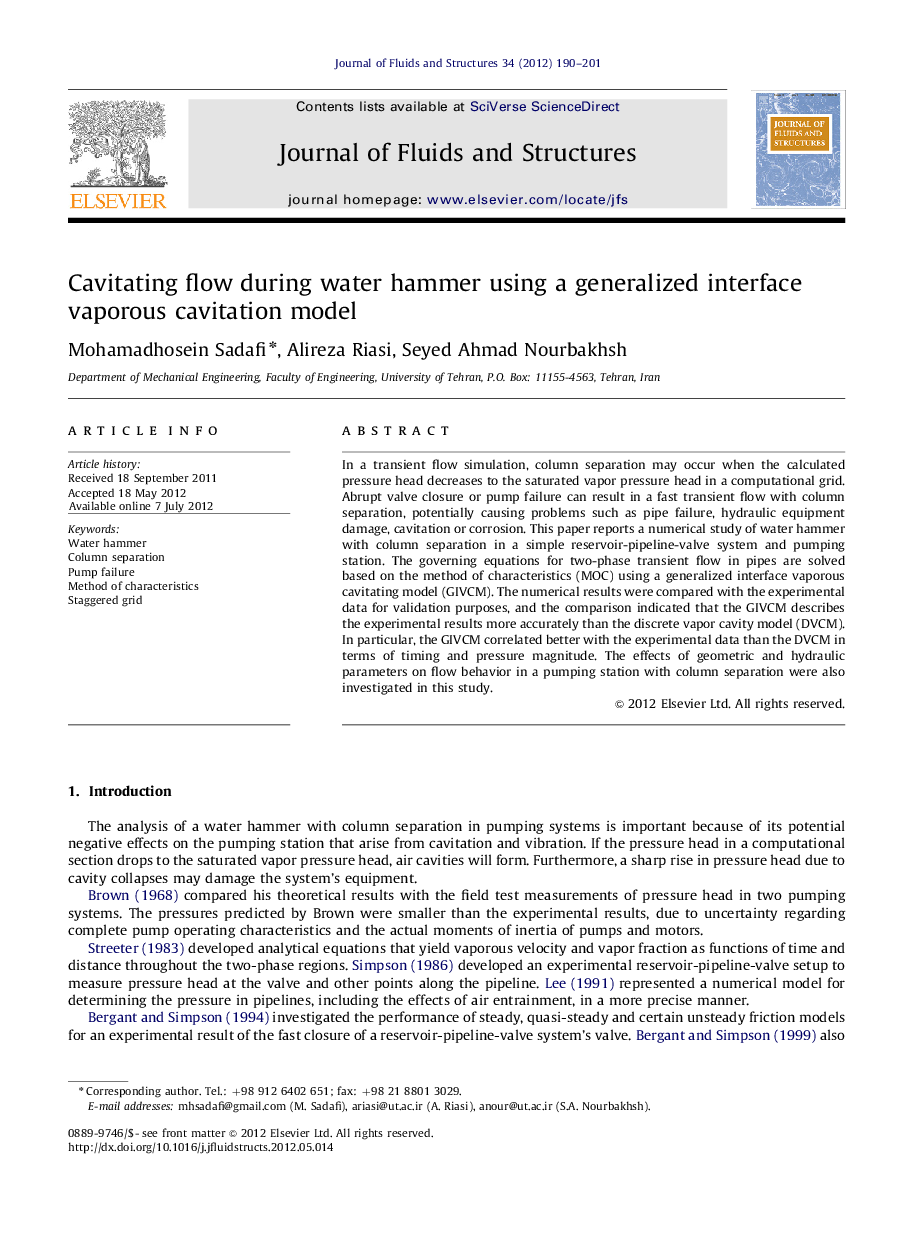| Article ID | Journal | Published Year | Pages | File Type |
|---|---|---|---|---|
| 789669 | Journal of Fluids and Structures | 2012 | 12 Pages |
In a transient flow simulation, column separation may occur when the calculated pressure head decreases to the saturated vapor pressure head in a computational grid. Abrupt valve closure or pump failure can result in a fast transient flow with column separation, potentially causing problems such as pipe failure, hydraulic equipment damage, cavitation or corrosion. This paper reports a numerical study of water hammer with column separation in a simple reservoir-pipeline-valve system and pumping station. The governing equations for two-phase transient flow in pipes are solved based on the method of characteristics (MOC) using a generalized interface vaporous cavitating model (GIVCM). The numerical results were compared with the experimental data for validation purposes, and the comparison indicated that the GIVCM describes the experimental results more accurately than the discrete vapor cavity model (DVCM). In particular, the GIVCM correlated better with the experimental data than the DVCM in terms of timing and pressure magnitude. The effects of geometric and hydraulic parameters on flow behavior in a pumping station with column separation were also investigated in this study.
